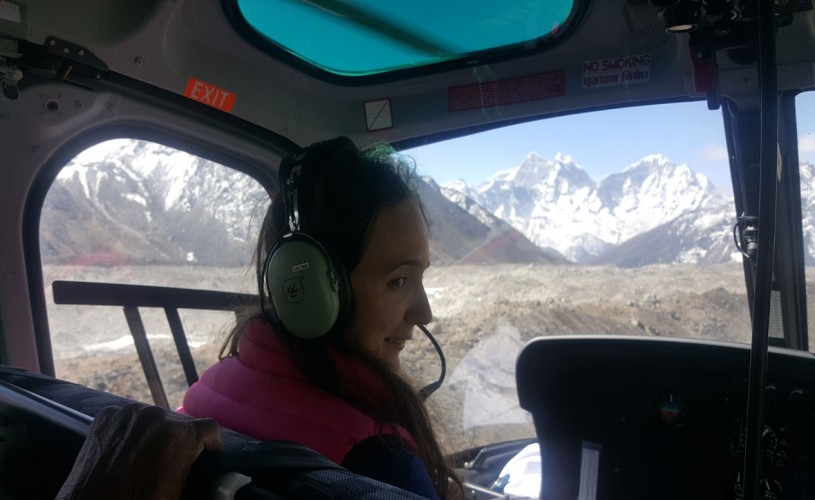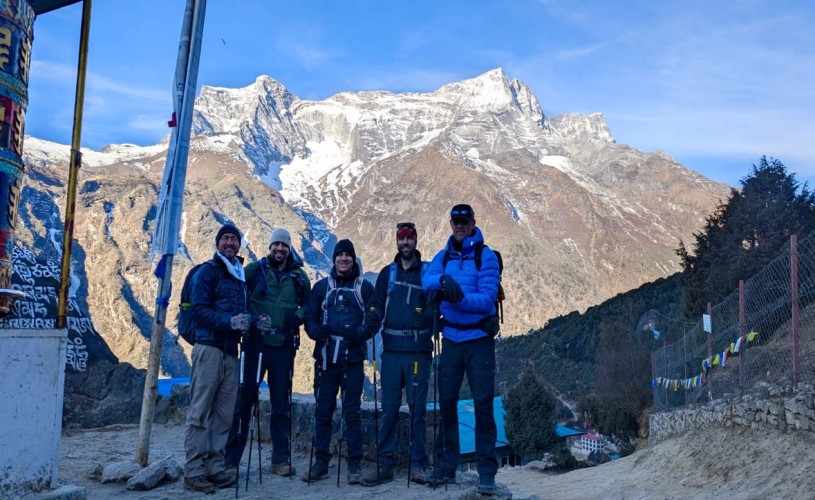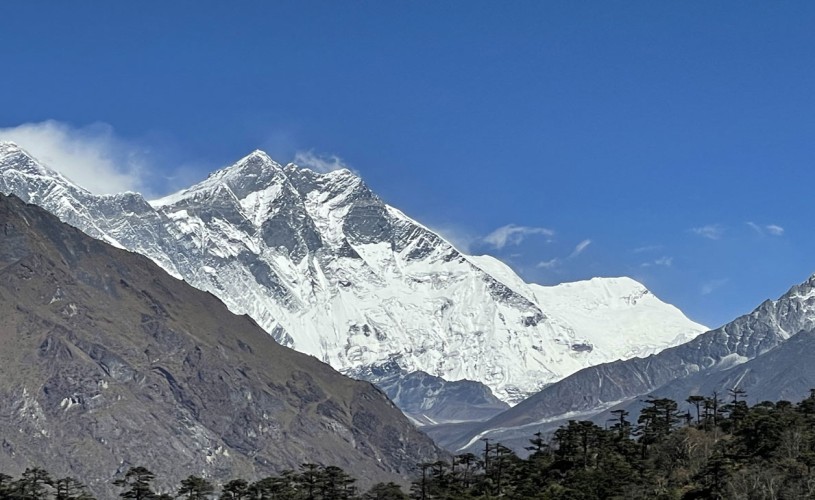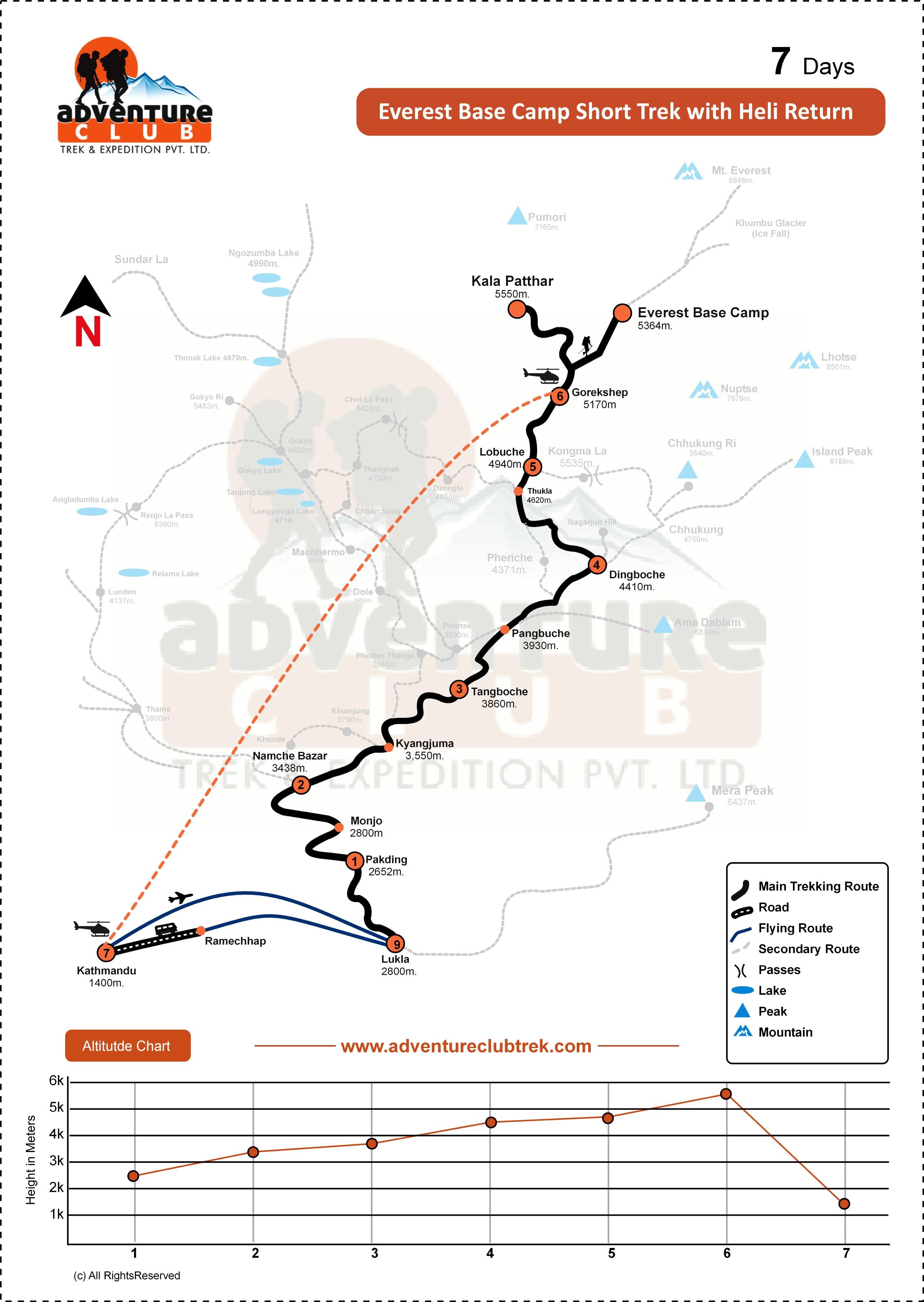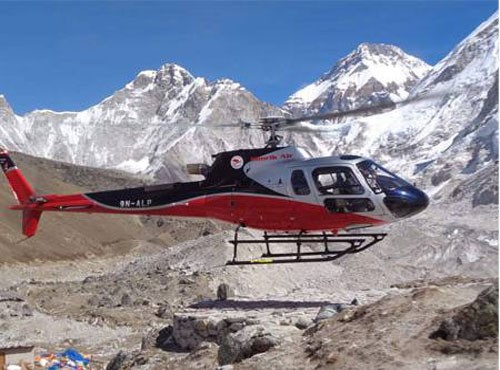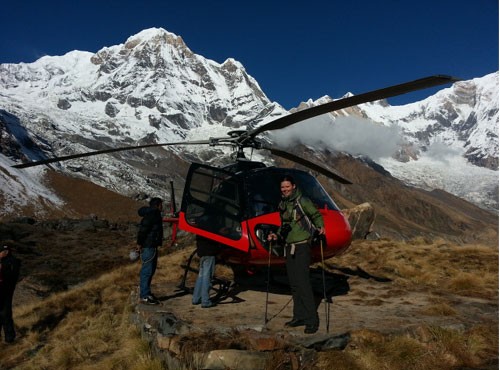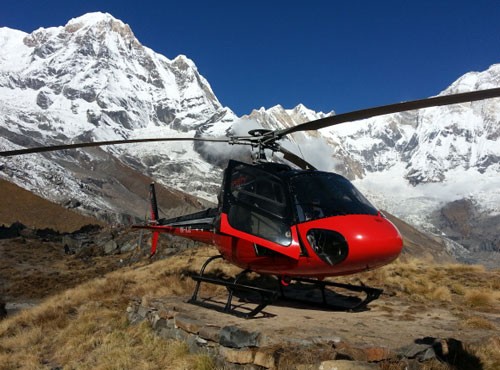Highlights of EBC Short Trek with Helicopter Return:
- Short and scenic flight to Lukla.
- Explore the most beautiful villages in the region
- Meet Sherpas and learn about their culture
- Every day, you can trek in the corner of the magnificent mountains
- Enjoy the sunrise from the Kalapathar mountains by hiking to the summit.
- Everest is the most beautiful mountain in the world.
- Tallest Mountain Peaks: Mt. Lhotse and Ama-Dablam
- Dramatic helicopter flight from Gorekshep to Kathmandu
EBC Short Trek with Heli Return 7 Days Best Price 2026/2027
Is it possible to complete the Everest Base Camp trek, including a helicopter return, in just seven days? With Adventure Club Trek, it is. This exclusive package offers you the opportunity to reach Everest Base Camp in half the usual time.
It is an unparalleled adventure that seamlessly blends cultural immersion with breathtaking natural beauty, promising a once-in-a-lifetime experience. Along the way, you will encounter the essence of mountaineering and the vibrant spirit of the Sherpas, making the trek even more exciting. And to top it all off, the journey concludes with an exhilarating helicopter ride back.
Everest Base Camp Trekking with Helicopter Return package featuring a helicopter return from Gorakshep to Kathmandu. This unique package seamlessly blends trekking and helicopter flights, making it ideal for adventurers seeking a swift and efficient journey. The Everest Base Camp Trek with Helicopter Return ensures an authentic trekking experience complemented by a breathtaking aerial perspective.
This package is perfect for trekkers who have limited time and still wish to experience the full essence of theEverest Base Camp Trek. It includes the standard flight from Kathmandu to Lukla, an ascent to Kala Patthar, and a helicopter ride directly from Gorakshep back to Kathmandu.
This itinerary not only saves time but also avoids the redundancy of retracing the same route on the return journey. The 7-Day Everest Base Camp Trek with Helicopter Return is truly exceptional. Participants will be immersed in awe-inspiring mountain vistas, untamed wilderness, and serene Buddhist enclaves.
Our meticulously crafted itinerary allows trekkers to complete the Everest Base Camp Trek within a week, offering a unique opportunity to explore Nepal's Himalayan culture and Tibetan Buddhist heritage. The trek concludes with a scenic helicopter flight to Kathmandu, providing a whirlwind tour of historical sites, diverse flora and fauna, and majestic peaks such as Mt. Makalu, Mt. Nuptse, and Mt. Cho Oyu.
This trekking trip strikes a perfect balance between challenge and reward. Trekkers will navigate through spiral staircases, verdant valleys, and the rugged trails of the Khumbu Region, including the rhododendron forests.
The journey reaches its pinnacle at Kala Patthar (5,545 meters), offering spectacular views of Lhotse, Nuptse, Ama Dablam, and Pumori. Sagarmatha National Park, a haven for nature enthusiasts, is part of the trek, with opportunities to spot rare mammals and birds. Additionally, trekkers will experience the warm hospitality and mountaineering prowess of the Khumbu Sherpa community.
The Everest Base Camp Short Trek with Helicopter Return begins at the dramatic Lukla airport and concludes at Gorakshep. The helicopter ride from Gorakshep to Kathmandu via Lukla offers a unique and lasting impression of the Himalayas.
For those with more time, the 13-day Everest Base Camp Trek includes acclimatization days and is highly recommended. Physically fit and experienced hikers may prefer the Comfortable Everest Base Camp trek with helicopter return (12 days), which can be completed without acclimatization days
To book your trip:
Booking the Everest Base Camp trek with a helicopter return for 7 days is simple. Just let us know your preferred date and share your details to confirm your booking. We can help you choose the right time for your trip. You can reach out to us via email or phone through social media, as mentioned below.
For 24/7 direct assistance, call Mr. Birendra at +977-9851025658 (WhatsApp and Viber).
You can also contact us via email at [email protected].
For instant booking, click Book Now.
Alternatively, visit our Contact Us page Click Here
Best Time to trek EBC with Helicopter Return: 7 Days
Similar to the classic Everest base camp trek, this package is ideal for trekking during the autumn and spring months. September, October, and November are highly recommended, as the mountains are stunningly picturesque during these times. Due to the influx of trekkers,
It is advisable to make pre-bookings for the 7-day EBC Trek. Spring offers a different charm with blooming wildflowers and pleasant weather, making the 7-day Everest Base Camp Trek with Helicopter Return a serene experience.
Trekking in January and December is challenging due to extreme cold and heavy snowfall, making even the short Everest Base Camp Trek difficult. Similarly, trekking in June and July is not feasible because of the slippery trails caused by the monsoon rains.
For those planning to visit Nepal during winter and summer, we can arrange a helicopter tour to Everest Base Camp with three landings, ensuring you still get to experience the breathtaking beauty of the region.
How difficult is the Everest Base Camp with Heli Trek?
The Helicopter Return Everest Base Camp Trek is a tough adventure, especially for first-time hikers. You’ll need to walk 5 to 6 hours daily on steep, uneven paths with many challenges. The trek reaches heights over 4000 meters, so altitude sickness is a risk. You’ll travel through rugged mountains, valleys, rocky trails, and meadows. Being in good physical and mental shape is essential for this journey. For those new to hiking, the long distances and difficult terrain may be overwhelming, making it essential to prepare for the physical demands of the Himalayas.
Major Sights of 7-Day Everest Base Camp Trek 2025/2026
Iconic Peaks and Breathtaking Vistas
Embark on a journey where adventure meets awe-inspiring scenery. Trekking to Everest Base Camp treats you to unparalleled views of majestic mountains such as Mt. Everest (8,848.86 m), Mt. Lhotse (8,516 m), Cho Oyu (8,201 m), Mt. Makalu (8,463 m), Pumori (7,161 m), Thamserku (6,623 m), Kangtega (6,782 m), Kusum Kanguru (6,367 m), and Kongde Ri (6,187 m). This specially curated package enhances your experience by offering an exclusive helicopter ride back to Lukla, granting a rare aerial perspective of the Khumbu mountain ranges. Every moment is designed to capture the essence of high-altitude adventure.
Embracing Sherpa Heritage in Namche Bazaar
A key highlight of your trek is the authentic encounter with local culture. Namche Bazaar, renowned for its Sherpa community and rich mountaineering legacy, invites you to explore its charming streets. Nestled beneath snow-capped peaks, this picturesque village features distinctive architecture that evokes a deep sense of joy and discovery. As the gateway to Everest, Namche Bazaar seamlessly blends traditional charm with modern conveniences, making it a beloved stop for every adventurer.
A Spiritual Sojourn at Tengboche Monastery
Discover serenity at one of the Khumbu region’s most revered spiritual sites. Tengboche Monastery, also known as Dawa Choling Gompa, stands as a testament to Tibetan Buddhist heritage. The monastery's exquisite design, adorned with intricate art on its walls and ceilings, fosters a profound sense of peace and spirituality. Besides its historical and religious significance, the site offers breathtaking views of Ama Dablam, encouraging you to explore its expansive grounds as you embark on a reflective journey.
Into the Wild: Nature and Wildlife Wonders
The trail to Everest Base Camp weaves through the heart of Sagarmatha National Park, a UNESCO World Heritage Site teeming with biological diversity. In the spring, the landscape bursts into bloom with vibrant rhododendrons and a welcoming warmth that enhances the trekking experience. Along your path, you may encounter rare and endangered species such as the lophophorus, Himalayan thar, red panda, musk deer, and yellow-billed chough, among others. Every step in this natural haven is a celebration of the wild’s enduring beauty.

